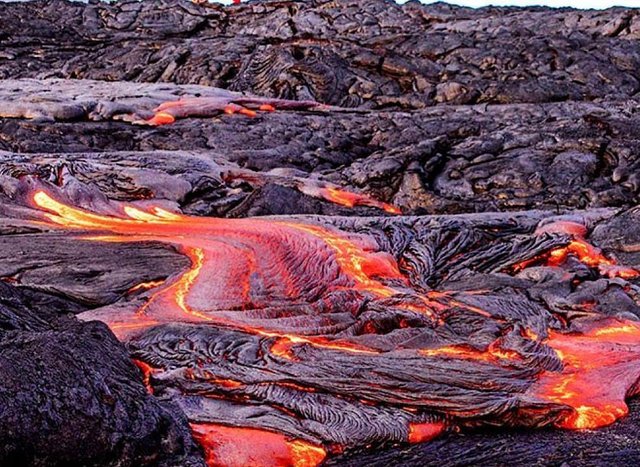What is LAVA ??
 Lava is molten rock generated by geothermal energy and expelled through fractures in planetary crust or in an eruption, usually at temperatures from 700 to 1,200 °C. It is very important to mention that geologists use the word "magma" for molten rock that is still underground, and the word "lava" once it has erupted onto the surface.
Lava is molten rock generated by geothermal energy and expelled through fractures in planetary crust or in an eruption, usually at temperatures from 700 to 1,200 °C. It is very important to mention that geologists use the word "magma" for molten rock that is still underground, and the word "lava" once it has erupted onto the surface.
Lava is made up of crystals, volcanic glass, and bubbles (volcanic gases). As magma gets closer to the surface and cools, it begins to crystallise minerals like olivine and form bubbles of volcanic gases. When lava erupts it is made up of a slush of crystals, liquid, and bubbles. The liquid "freezes" to form volcanic glass. Chemically lava is made of the elements silicon, oxygen, aluminum, iron, magnesium, calcium, sodium, potassium, phosphorus, and titanium (plus other elements in very small concentrations).
Rocks in the mantle and the core are still hot from the formation of the Earth about 4.6 billion years ago. When the Earth formed, material collided at high speeds. These collisions generated heat and that heat became trapped in the Earth. There is also heat within the earth produced by radioactive decay of naturally-occurring radioactive elements. This heat is enough to partially melt some rocks in the upper mantle, about 50-100 km below the surface. The generated liquid magma is what produces lava when it goes outside the volcano.
Although lava can be up to 100,000 times more viscous than water, lava can flow great distances before cooling and solidifying because of its thixotropic and shear thinning properties.